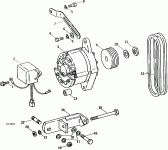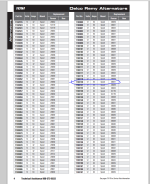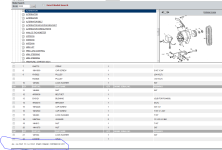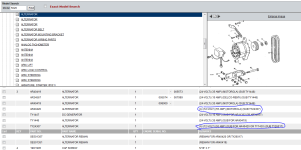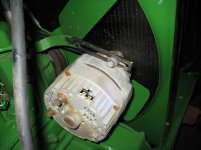
The numbers on the alternator: 1103120***3A. Next line: 0L18 12vneg.
The*** represents 2 or 3 characters that are obliterated.
My tractor is A 5020 S/N under 25000. You send pix of other tractors and I understand for reference, but I just wanted to make sure we were on the same page.
According to the parts lists on the dealer screen, there was a short run of 5020s that used delco-remy alt, and the rest used motorolas. Mine is not in the series that specified delco, but that's what's there. As for the 12v notation on the case, it's anyone's guess. As I have said, anything is possible as hacked up as the electrical system was. I need to get the thing to make some electricity to see what it really is.
In the picture you will see 2 terminals on the left side, one above the other. They are BOTH isolated from the case, the top one is labeled BAT, the other is not labeled. I assume that the BAT one goes to + and the other to - on the 24v battery (2 12v bats in series)
The faston type terminals sticking out the top are labeled 1/R and 2/F. By this I mean that left one has 1 and R near it, and the right one has 2 and F near it.
Near as I have been able to find out, I have to put voltage on these to 'excite' things and make it work. Do you know which terminal is + or -?
I see the breaker in the picture, but don't understand how it is connected. Is this the breaker that goes between the battery interconnection/ground cable and the frame? I have heard that there is one, but can't find a good diagram of it. Even the diagrams that the dealer has don't seem to agree with other diagrams I have found.

